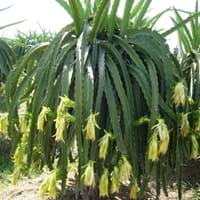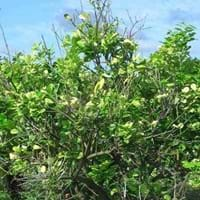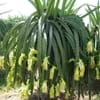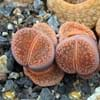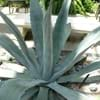Life Span
Perennial
Perennial
Origin
Caribbean, Central America
Southeastern Asia
Types
Hylocereus undatus, Hylocereus costaricensis, Hylocereus megalanthus
Not Available
Number of Varieties
Not Available
Habitat
Rocky areas, Terrestrial
Deep, gardens, old gardens, Well Drained
USDA Hardiness Zone
11-15
9-11
Sunset Zone
H1, H2, 21, 22, 23, 24
H1, H2, 8, 9, 12, 13, 14, 15, 16, 17, 18, 19, 20, 21, 22, 23, 24
Habit
Spreading
Oval or Rounded
Flower Color
White, Gold
White
Flower Color Modifier
Bicolor
Bicolor
Fruit Color
Red
Yellow, Green, Yellow green
Leaf Color in Spring
Not Available
Green
Leaf Color in Summer
Not Available
Green
Leaf Color in Fall
Not Available
Green
Leaf Color in Winter
Not Available
Light Green
Plant Season
Summer, Fall
Spring, Summer, Fall
Sunlight
Full Sun
Full Sun, Partial Sun
Type of Soil
Loam, Sand
Loam, Sand
The pH of Soil
Acidic, Neutral, Alkaline
Acidic, Neutral
Soil Drainage
Well drained
Well drained
Bloom Time
Early Summer, Summer
Spring, Late Spring, Early Summer, Summer, Late Summer, Early Fall
Tolerances
Drought
Drought
Where to Plant?
Container, Ground, Pot
Ground
How to Plant?
Cuttings, reseeds, Stem Cutting
Seedlings
Plant Maintenance
Medium
Medium
Watering Requirements
Average Water Needs, Keep the Soil well drained
Average Water Needs, Water Deeply
In Summer
Lots of watering
Lots of watering
In Spring
Moderate
Moderate
In Winter
Average Water
Average Water
Soil pH
Acidic, Neutral, Alkaline
Acidic, Neutral
Soil Type
Loam, Sand
Loam, Sand
Soil Drainage Capacity
Well drained
Well drained
Sun Exposure
Full Sun
Full Sun, Partial Sun
Pruning
Remove damaged leaves, Remove dead branches, Remove dead leaves
Prune for shortening long shoots, Remove damaged leaves, Remove dead branches, Remove dead leaves, Thinning
Fertilizers
All-Purpose Liquid Fertilizer
Apply N-P-K, can go long without fertilizers
Pests and Diseases
Red blotch
Armored scales, Fomes root rot, Mites, Red blotch
Plant Tolerance
Drought
Cold climate, Drought, Heat And Humidity
Flowers
Showy
Insignificant
Flower Petal Number
Semi-Double
Single
Fragrant Bark/Stem
No
Yes
Foliage Texture
Bold
Medium
Foliage Sheen
Not Available
Glossy
Attracts
Not Available
Birds, Butterflies
Allergy
no allergic reactions
Not Available
Aesthetic Uses
As decorated salad, Beautification
Bonsai
Beauty Benefits
Not Available
Not Available
Environmental Uses
Air purification
Air purification
Medicinal Uses
Antidiabetic, Appetite enhancer, increase memory, Weight loss
Blood purifier, Digestion problems, Digestive disorders
Part of Plant Used
Fruits
Fruits, Leaves
Other Uses
Not Available
Making Shampoo, Used as insect repellent
Used As Indoor Plant
Yes
No
Used As Outdoor Plant
Yes
Yes
Garden Design
Container, Feature Plant, Houseplant, Rock Garden, Wall, Tropical
Container, Edible, Fruit / Fruit Tree, Hedges, Mixed Border
Botanical Name
HYLOCEREUS undatus
CITRUS hystrix
Common Name
Pitahaya, Dragon fruit, Night blooming Cereus, Strawberry Pear, Belle of the Night, Cinderella Plant, Jesus in the Cradle
Kaffir Lime, Makrut
In Hindi
Red Pitaya
काफ़िर लाइम
In German
Drachenfrucht, Distelbirne
Kaffernlimette
In French
pitaya, fruit du dragon, cierge-lézard, poire de chardon
combava
In Spanish
pitahaya roja (Colombia, Mexico, Venezuela); flor de caliz, pitajava (Puerto Rico); junco, junco tapatio, pitahaya orejona, reina de la noche, tasajo (Mexico)
cafre
In Greek
Φρούτο του δράκου (fruto tu draku)
Καφρός Lime
In Portuguese
pitaia, cato-barse, cardo-ananaz, rainha da noite
Kaffir Lime
In Polish
Red Pitaya
kaffir wapno
In Latin
Red Pitaya
Cafres Lime
Phylum
Magnoliophyta
Tracheophyta
Class
Magnoliopsida
Magnoliopsida
Order
Caryophyllales
Sapindales
Family
Cactaceae
Rutaceae
Clade
Angiosperms, Core eudicots, Eudicots
Angiosperms, Eudicots, Rosids
Tribe
Cacteae
Not Available
Subfamily
Cactoideae
Not Available
Number of Species
Not Available
Not Available
Importance of Red Pitaya and Kaffir Lime
Want to have the most appropriate plant for your garden? You might want to know the importance of Red Pitaya and Kaffir Lime. Basically, these two plants vary in many aspects. Compare Red Pitaya and Kaffir Lime as they differ in many characteristics such as their life, care, benefits, facts, etc. Every gardener must at least have the slightest clue about the plants he wants to plant in his garden. Compare their benefits, which differ in many ways like facts and uses. The medicinal use of Red Pitaya is Antidiabetic, Appetite enhancer, increase memory and Weight loss whereas of Kaffir Lime is Blood purifier, Digestion problems and Digestive disorders. Red Pitaya has beauty benefits as follows: Not Available while Kaffir Lime has beauty benefits as follows: Not Available.
Compare Facts of Red Pitaya vs Kaffir Lime
How to choose the best garden plant for your garden depending upon its facts? Here garden plant comparison will help you to solve this query. Compare the facts of Red Pitaya vs Kaffir Lime and know which one to choose. As garden plants have benefits and other uses, allergy is also a major drawback of plants for some people. Allergic reactions of Red Pitaya are no allergic reactions whereas of Kaffir Lime have Not Available respectively. Having a fruit bearing plant in your garden can be a plus point of your garden. Red Pitaya has showy fruits and Kaffir Lime has showy fruits. Also Red Pitaya is not flowering and Kaffir Lime is not flowering . You can compare Red Pitaya and Kaffir Lime facts and facts of other plants too.
